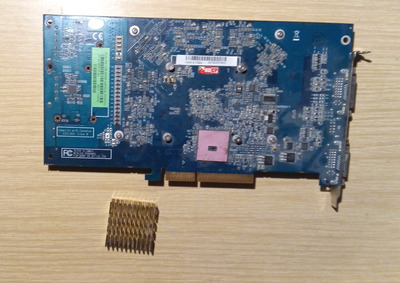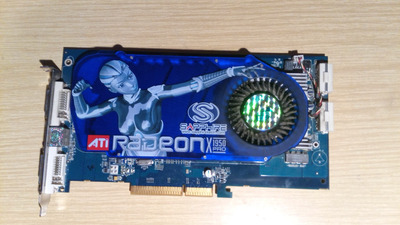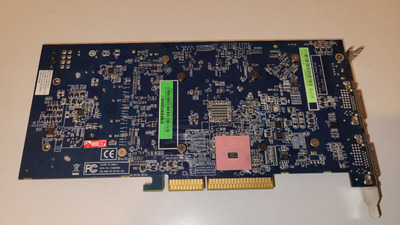First post, by Azarien
I don't really know if this card is working, I don't want to risk it without the heatsink which I found inside this long unused PC...
So this heatsink used to be glued to the pink foam, which is about 0.5mm taller than the chip in the middle of it.
The glue seems to be of adhesive tape kind, but it's no longer sticky enough to keep the heatsink in place.
What should I do? What kind of glue is recommended, and should I also add some thermal paste to the chip itself?


